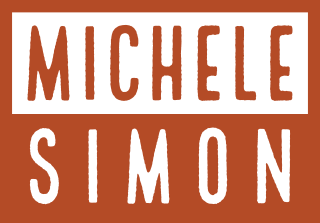Let's call "workplace bullying" psychological violence and abuse at work instead
The Limitations of the Term “Bullying”
Words matter. They help us make sense of our lived experiences.
This week has been dubbed “Workplace Bullying Awareness Week” by the Canadian Institute of Workplace Bullying Resources. The goal is to raise awareness and create a “worldwide voice promoting psychological safety in all workplaces”.
I am certainly all for that.
However, I dislike the word “bullying” because I don’t think it adequately describes either the harm inflicted or the resulting trauma.
According to the Workplace Bullying Institute, workplace bullying is defined as:
repeated, health-harming mistreatment by one or more employees of an employee: abusive conduct that takes the form of verbal abuse; or behaviors perceived as threatening, intimidating, or humiliating; work sabotage; or in some combination of the above.
I understand the word bullying is intended as a catch-all word that most people can understand. But for most people, the word conjures up images of a schoolyard bully. (Of course, such bullies can also be extremely harmful, even deadly.)
The Problem with “Bullying”: Overlooking Covert Abuse
My main objection is that the word bullying keeps the focus on overt acts such as those in the above definition, mainly forms of obvious verbal abuse.
In contrast, the word bullying really does not account for the many different forms of covert abuse that have become more common in recent years.
Such behaviors can cause even more harm than overt abuse because they are often designed to make you doubt yourself and your experiences. The ultimate goal is to undermine your performance and break you emotionally.
Signs of Covert Abuse Behavior
Examples of covert abusive behavior include:
Withholding information that you need to do your job effectively
Not providing proper resources to do your job effectively
Assigning tasks that are not within the scope of your job
Overworking you to the point that you cannot function
Not inviting you to meetings or leaving you off emails and other communications
Various forms of gaslighting questions, such as: “did you send me that document”? when they know you did
Weaponizing online tools to embarrass you in front of others
Placing you on an impossible “performance improvement plan” or PIP
Sabotaging performance reviews
Witch hunts designed to “catch” you in some alleged wrongdoing
Gossip or outright smear campaigns.
The last three happened to me. All behind my back.
A Personal Story: Beyond the Definition of Bullying
I was the target of a concerted 2+ year smear campaign designed to remove me from my job. My perpetrator pretended to be my friend the entire time. He ultimately succeeded through a combination of sexism, lies, and sabotage. Was this bullying? I would not use that word to describe this behavior.
None of the covert examples listed above would be considering bullying by most definitions of the word. Covert abuse is simply not bullying in the way we think of it.
I believe the focus should be on the impact such behaviors have. Through this lens all these covert behaviors are forms of psychological abuse and psychological violence.
And our own federal government supports this framing and language.
The U.S. Department of Labor offers us a few definitions under the agency’s “Workplace Violence Program” that are instructive. Most relevant to covert abuse is “psychological intimidation or harassment, which includes:
making statements which are false, malicious, disparaging, derogatory, rude, disrespectful, abusive, obnoxious, insubordinate, or which have the intent to hurt others' reputations.
I appreciate that the federal government recognizes making “false, malicious, and disparaging” statements a form of psychological harassment, especially because when these statements are being made behind your back, you don’t even know about it until it’s too late. The harm comes later and this is potentially very psychologically damaging. (I wrote more about smear campaigns here.)
In addition, the U.S. Centers for Disease Control and Prevention (our federal public health agency) identifies four separate types of workplace violence, including what they call “worker on worker” violence, which they define as:
bullying, and frequently manifests as verbal and emotional abuse that is unfair, offensive, vindictive, and/or humiliating.
So even “bullying”, according to the federal government, is a form of workplace violence. Such violence can also include emotional abuse that is unfair or vindictive. I would say that a smear campaign and other covert behaviors fit this definition.
Finally, according to a recently published article, the U.S. Occupational Safety and Health Administration (OSHA, the agency responsible for all worker safety) includes “psychological violence” under “workplace violence”, defined as:
any behavior that degrades, humiliates, irritates, alarms, or verbally insults another person, including abusive words, bullying, gestures, and intimidations…
Psychological violence is the intended use of power … with the potential to impair the affected individual's physical, mental, spiritual, moral, or social development.
Looking at the list of examples of covert behaviors, including smear campaigns, all of them are degrading and humiliating and can certainly impair our mental, spiritual, and physical health.
In other words, the opposite of psychological safety.
Trauma: The Unspoken Consequence of Workplace Bullying
The word bullying also does not convey the very real trauma that many can experience. (More on workplace trauma another time.)
I am no longer using the phrase “workplace bullying” as an umbrella term for various forms of abuse at work, as many others do.
My preferred terms are workplace psychological violence and abuse to describe the perpetrator’s behavior and workplace trauma to describe the impact.
Please know that you don’t have to navigate this alone, a job harassment attorney like me can help you. Understanding these dynamics is the first step towards reclaiming your power and well-being.
